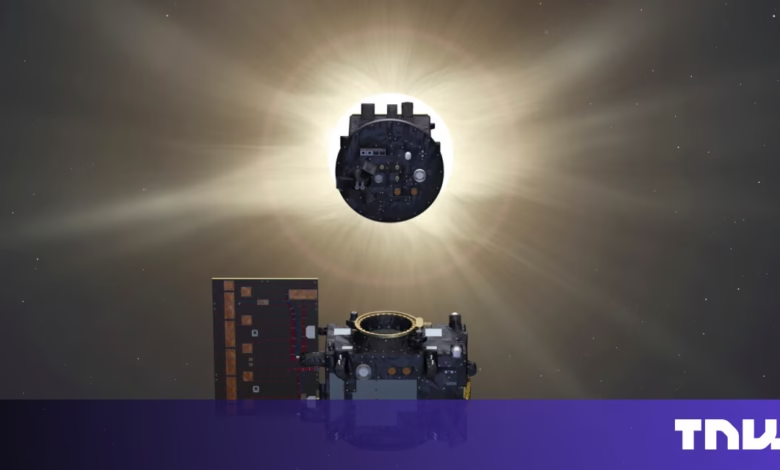Europe’s Artificial Solar Eclipse Reveals Stunning Sun Secrets

▼ Summary
– Two European satellites, Proba-3, successfully created an artificial solar eclipse to study the Sun’s corona, a feat achieved through collaboration with over 40 space tech firms.
– The mission involved two satellites orbiting Earth 150 meters apart: one blocking the Sun (Occulter) and the other capturing the corona (Coronagraph).
– The Sun’s corona, hotter than its surface, is the source of solar storms and coronal mass ejections, which can disrupt Earth’s telecommunications and create auroras.
– Proba-3 can generate artificial eclipses every 19.6 hours for up to 6 hours, far exceeding the brief duration and rarity of natural solar eclipses.
– Key technologies for the mission included solar-tracking sensors, light detectors, and precision software from European startups, enabling millimetre-level alignment at high speeds.
Europe’s groundbreaking artificial solar eclipse mission has unveiled unprecedented details about the Sun’s mysterious corona, thanks to cutting-edge satellite technology. Two specially designed probes working in perfect harmony have achieved what was once thought impossible – creating a controlled eclipse in space to study our star’s superheated outer atmosphere.
The European Space Agency’s Proba-3 mission, developed in collaboration with over 40 tech firms, represents a major leap in solar observation. Among the contributors are innovative startups that provided critical components, including ultra-precise solar tracking sensors, advanced light detectors, and sophisticated flight control software. Launched from India last year, this mission could redefine how scientists examine the Sun’s behavior.
The ingenious setup involves two satellites orbiting Earth just 150 meters apart. One spacecraft, named Occulter, mimics the Moon’s role in a natural eclipse by blocking the Sun’s blinding glare. Its partner, the Coronagraph, captures crystal-clear images of the corona – an atmospheric layer that reaches temperatures of 2 million °C and fuels solar storms capable of disrupting Earth’s communications.
Unlike fleeting natural eclipses, which last mere minutes, this artificial version can be sustained for up to six hours per orbit. “We can trigger our eclipse every 19.6 hours, whereas natural total eclipses happen just once or twice a year,” said Andrei Zhukov of the Royal Observatory of Belgium, which developed the mission’s ASPIICS optical instrument.
Maintaining millimeter-perfect alignment while hurtling around Earth at 1 kilometer per second requires remarkable engineering. Dutch startup Lens R&D, an ESA incubator graduate, supplied sensors that track the Sun’s position with extreme accuracy. Irish firm Onsemi contributed ultra-sensitive light detectors to adjust the satellites’ positioning mid-flight. Meanwhile, Poland’s N7 Mobile adapted its software expertise from consumer apps to spacecraft control systems.
This mission doesn’t just replicate an eclipse – it improves upon nature’s version, offering scientists extended observation windows to decode solar mysteries. The data gathered could lead to better predictions of space weather events that impact satellites, power grids, and even aurora displays on Earth.
By orchestrating this celestial ballet, European researchers and engineers have opened a new chapter in solar science, proving that human ingenuity can outshine even the most spectacular cosmic phenomena.
(Source: The Next Web)
